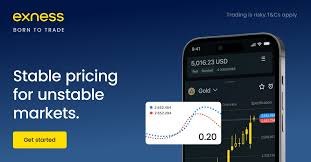
Unlocking the World of Forex Trading
The forex market offers an exciting opportunity for traders to engage in global currency trading. With platforms like www exness com forex https://exnesswebterminal.com/, aspiring traders can easily access the industry and begin their journey. In this article, we will delve into the basics of forex trading, the principles that govern currency fluctuations, and how you can utilize www exness com forex to achieve your trading goals.
What is Forex Trading?
Forex trading refers to the act of buying and selling currencies with the aim of making a profit. It operates on a decentralized market where different participants, including banks, financial institutions, corporations, and individual traders, engage in currency transactions. The forex market is the largest financial market in the world, with a daily trading volume exceeding $6 trillion, providing ample opportunities for profit.
The Basics of Currency Pairs
At the core of forex trading is the concept of currency pairs. A currency pair consists of two currencies being traded against each other. The first currency in the pair is known as the base currency, while the second one is referred to as the quote currency. For example, in the EUR/USD pair, the Euro is the base currency, and the US Dollar is the quote currency.
The price of a currency pair indicates how much of the quote currency is needed to purchase one unit of the base currency. Understanding currency pairs is essential for traders as it helps them analyze market trends and determine potential entry and exit points for their trades.
Factors Influencing Currency Values
Numerous factors can influence the value of currencies in the forex market. These factors can be broadly categorized into fundamental and technical analyses:
- Fundamental Analysis: This approach focuses on economic indicators such as interest rates, inflation, employment rates, and geopolitical events. Central banks also play a crucial role in influencing currency values through monetary policy decisions.
- Technical Analysis: Technical traders use historical price data and charts to identify trends and make predictions about future price movements. This approach relies heavily on indicators, such as moving averages and relative strength index (RSI), to inform trading decisions.
Choosing the Right Forex Broker
Selecting a reliable forex broker is crucial to your trading success. A good broker should provide a user-friendly trading platform, competitive spreads, a range of trading instruments, and excellent customer support. With so many options available, it’s important to conduct thorough research to find a broker that fits your trading style and needs.

Trading Strategies for Forex Success
Developing an effective trading strategy is essential for navigating the forex market. Here are a few popular trading strategies that traders often utilize:
- Day Trading: This strategy involves making multiple trades within a single day to take advantage of short-term price movements. Day traders often close all their positions by the end of the trading day to avoid overnight risk.
- Swing Trading: Swing traders look to capitalize on price swings over a few days to weeks. This method relies on both technical and fundamental analysis to identify potential trends.
- Scalping: Scalping involves making numerous small trades throughout the day, aiming to profit from tiny price changes. This strategy requires quick decision-making and is best suited for traders who can dedicate significant time to monitoring the market.
Risk Management in Forex Trading
Effective risk management is one of the most critical aspects of forex trading. Without a solid risk management plan, even the most promising trading strategy can lead to significant losses. Here are some risk management techniques that every trader should adopt:
- Set Stop-Loss Orders: A stop-loss order automatically closes a position when it reaches a predetermined level of loss, helping you limit your losses and manage risk.
- Use Take-Profit Orders: Similar to stop-loss orders, take-profit orders allow traders to lock in profits by closing a position once it reaches a certain level of gain.
- Position Sizing: Determine the size of your trades based on your account balance and risk tolerance. A common rule is to risk only 1-2% of your account balance on a single trade.
The Role of Leverage in Forex Trading
Leverage allows traders to control a larger position with a smaller amount of capital, amplifying both potential gains and losses. While leverage can enhance profit potential, it also increases the risk of significant losses. It’s crucial for traders to use leverage responsibly and understand the risks involved before entering trades.
Getting Started with www exness com forex
To start trading on www exness com forex, follow these steps:
- Create an Account: Sign up for an account with Exness by providing your personal and financial information.
- Deposit Funds: Add funds to your trading account using one of the available payment methods. Exness offers a range of deposit options to suit your preferences.
- Download the Trading Platform: Access the Exness trading platform, which provides a user-friendly interface for executing trades and analyzing market data.
- Start Trading: Begin by selecting your preferred currency pairs, analyzing market conditions, and executing trades based on your chosen strategy.
Continuous Learning and Improvement
The forex market is dynamic and ever-changing, which means that continuous learning is essential for long-term success. Take advantage of educational resources, webinars, and trading forums to expand your knowledge and refine your trading skills.
In conclusion, www exness com forex offers an accessible platform for traders at all levels. By understanding the fundamentals of forex trading, conducting thorough research, and implementing effective strategies, you can navigate the forex market with confidence and work towards achieving your financial goals.
